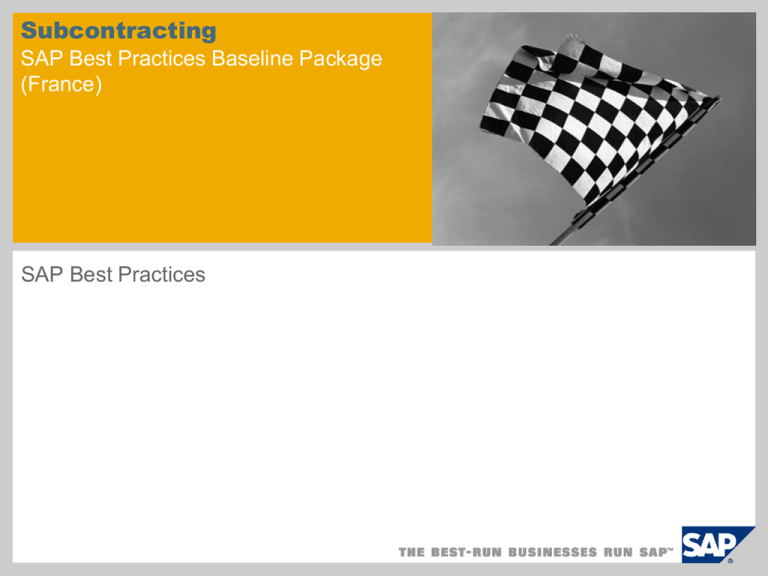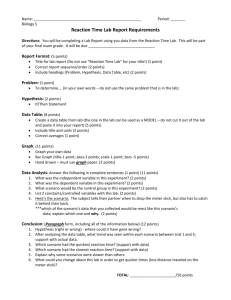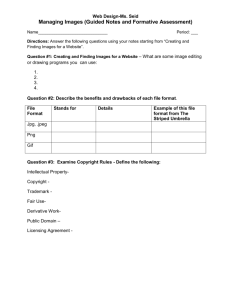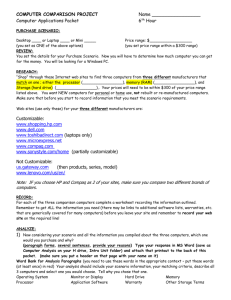Subcontracting - SAP Help Portal
advertisement

Subcontracting SAP Best Practices Baseline Package (France) SAP Best Practices Scenario Overview – 1 Purpose and Benefits: Purpose The Subcontracting process involves sending raw components to a vendor for specific manufacturing processes and receiving the value-added finished material back into inventory. Benefits BoM explosion triggers follow-on functions like delivery to subcontractor etc. Automatic posting of value flow Automatic posting of stocks into corresponding stock types Key process flows covered On goods delivery, the scenario focuses on the following activities: Purchase order creation based on a scheduled purchase requisition created by last MRP run Optional: manual purchase order creation Purchase order approval (if required) Outbound delivery Goods issue for delivery and shipment to subcontractor Scenario Overview – 1 Purpose and Benefits: Key process flows covered On goods receipt, the scenario focuses on the following activities: Goods receipt for purchase order delivered by subcontractor Component reservations and consumption of component quantities as provision of material Invoice receipt by line item Invoice verification and validation of tax expenses Outgoing payment Scenario Overview – 2 SAP Applications Required: Required SAP enhancement package 4 for SAP ERP 6.0 Company roles involved in process flows Purchasing Administrator Purchasing Manager Warehouse Clerk Accounts Payable Accountant Production Planner Scenario Overview – 3 Detailed Process Description: Subcontracting A subcontract purchase requisition is either generated via the Material Requirements Planning (MRP) process or manually by a requestor. A buyer validates the accuracy of the purchase requisition and converts it into a purchase order. The purchase order is subject to approval based on predefined parameters prior to being issued to a vendor. The consumption of sent components is recorded upon receipt of the value-added finished material. The vendor sends the invoice for the services provided which is paid during the normal payment cycle. Process Flow Diagram Initial Requirement Situation Execute MRP Create Subcontract PO Assign Purchase Requisition and Create Purchase Order Approve Purchase Orders Create Outbound Delivery Request Pick Confirmation (Optional) Generate Transfer Order (Optional) Confirm Transfer Order (Optional) Accounts Payable Accountant Warehouse Clerk Purchasing Manager Purchasing Purchasing Administrator Administrator Subcontracting Post Goods Issue Receive Goods from Subcontracting BO Invoice Receipt from Subcontracting BO MRP = Material Requirements Planning, PO = Purchase Order, GR/IR = Goods Receipt/Invoice Receipt, PPV = Purchase Price Variance Legend <Function> Symbol Description Usage Comments Band: Identifies a user role, such as Accounts Payable Clerk or Sales Representative. This band can also identify an organization unit or group, rather than a specific role. Role band contains tasks common to that role. Symbol Diagram Connection The other process flow symbols in this table go into these rows. You have as many rows as required to cover all of the roles in the scenario. Hardcopy / Document External to SAP External Events: Contains events that start or end the scenario, or influence the course of events in the scenario. Business Activity / Event Flow line (solid): Line indicates the normal sequence of steps and direction of flow in the scenario. Flow line (dashed): Line indicates flow to infrequentlyused or conditional tasks in a scenario. Line can also lead to documents involved in the process flow. Connects two tasks in a scenario process or a non-step event Business Activity / Event: Identifies an action that either leads into or out of the scenario, or an outside Process that happens during the scenario Does not correspond to a task step in the document Unit Process: Identifies a task that is covered in a step-by-step manner in the scenario Corresponds to a task step in the document SubProcess Reference Proces s Decisio n Usage Comments To next / From last Diagram: Leads to the next / previous page of the Diagram Flow chart continues on the next / previous page Hardcopy / Document: Identifies a printed document, report, or form Does not correspond to a task step in a document; instead, it is used to reflect a document generated by a task step; this shape does not have any outgoing flow lines Financial Actuals: Indicates a financial posting document Does not correspond to a task step in a document; instead, it is used to reflect a document generated by a task step; this shape does not have any outgoing flow lines Budget Planning: Indicates a budget planning document Does not correspond to a task step in a document; instead, it is used to reflect a document generated by a task step; this shape does not have any outgoing flow lines Manual Process: Covers a task that is manually done Does not generally correspond to a task step in a document; instead, it is used to reflect a task that is manually performed, such as unloading a truck in the warehouse, which affects the process flow. Existing Version / Data: This block covers data that feeds in from an external process Does not generally correspond to a task step in a document; instead, this shape reflects data coming from an external source; this step does not have any incoming flow lines System Pass / Fail Decision: This block covers an automatic decision made by the software Does not generally correspond to a task step in the document; instead it is used to reflect an automatic decision by the system that is made after a step has been executed. Financial Actuals Budget Planning Manual Proces s Unit Process Process Reference Description Process Reference: If the scenario references another scenario in total, put the scenario number and name here. Sub-Process Reference: If the scenario references another scenario in part, put the scenario number, name, and the step numbers from that scenario here Process Decision: Identifies a decision / branching point, signifying a choice to be made by the end user. Lines represent different choices emerging from different parts of the diamond. Corresponds to a task step in the document Corresponds to a task step in the document Does not usually correspond to a task step in the document; Reflects a choice to be made after step execution Existing Version / Data System Pass/F ail Decisio n




